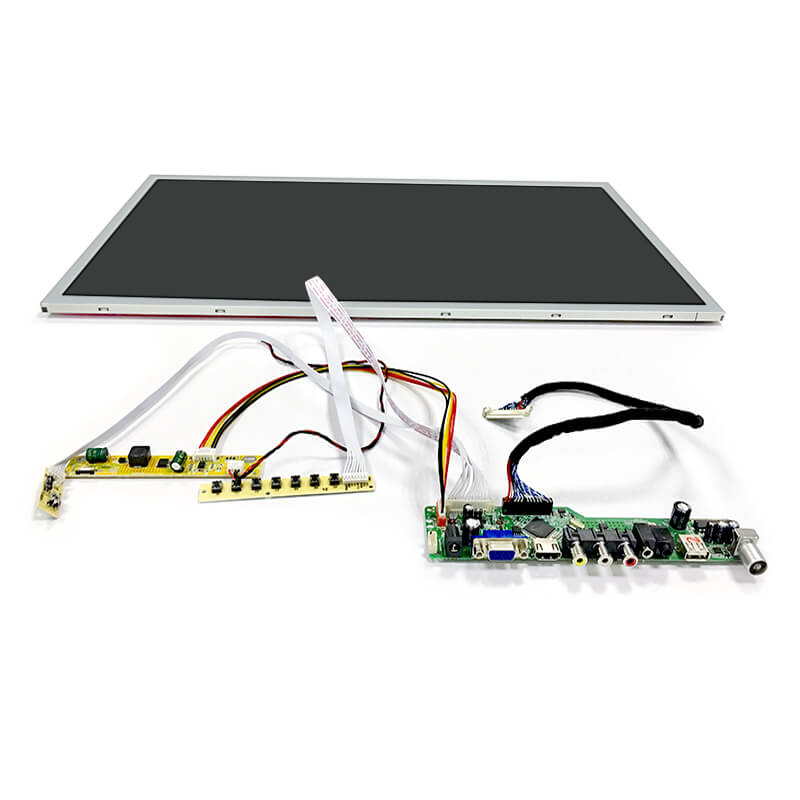Explore the world of LCD module kits and learn how to choose the right kit for your DIY project. Discover the benefits, interface options, and setup process for creating your own custom display screen.

1. Introduction to LCD Module Kits
LCD (Liquid Crystal Display) module kits are DIY display screens that can be used for a variety of electronic projects. From hobbyists creating custom gaming devices to industrial professionals building control panels, LCD module kits offer a cost-effective and customizable solution for anyone looking to add a display screen to their project.
In this article, we will discuss the different types of LCDs available, including OLED, TFT, and IPS, and the benefits of using LCD module kits. We will also cover the key factors to consider when choosing the right LCD module kit for your project, such as screen resolution, contrast ratio, color depth, and brightness, as well as interface options and microcontroller compatibility.
2. Choosing the Right LCD Module Kit
When it comes to choosing the right LCD module kit, there are several key factors to consider. The first is screen resolution, which determines the sharpness and clarity of the display. A higher resolution means a clearer display, but also a higher cost.
Another important factor is contrast ratio, which refers to the difference between the brightest white and the darkest black that the screen can display. A higher contrast ratio results in better color depth and a more vivid display.
Color depth and brightness are also important considerations. Color depth refers to the number of colors that can be displayed, while brightness refers to the level of light emitted by the screen. A higher color depth and brightness will result in a more vivid and eye-catching display.
Finally, it's important to consider the interface options available and their compatibility with your microcontroller. Some modules may require additional hardware, such as level shifters or voltage converters, to work with certain microcontrollers.
Microcontroller compatibility
3. Setting Up Your LCD Module Kit
Setting up an LCD module kit typically involves the following steps:
1. Preparing your microcontroller - Ensure that your microcontroller is properly configured and programmed. This may involve installing software libraries or drivers, setting up communication interfaces, and preparing the microcontroller's GPIO pins.
2. Connecting the LCD module - Connect the LCD module to the microcontroller according to the instructions provided with the kit. This may involve connecting power and ground, data lines, and control signals.
3. Writing the control code - Write the code that will control the LCD module. This may involve initializing the module, sending data to be displayed, and controlling the display's parameters such as contrast and brightness.
4. Adjusting contrast and brightness - Adjust the contrast and brightness of the display as necessary. This may involve sending commands to the microcontroller to adjust the display's parameters, or adjusting potentiometers on the LCD module itself.
It is important to carefully follow the instructions provided with the LCD module kit to ensure a successful setup. If you encounter any issues, consult the documentation or contact the manufacturer for assistance.
4. Applications of LCD Module Kits
LCD module kits can be used in a variety of applications, including:
DIY electronic projects - LCD module kits are often used in hobbyist and DIY projects, such as creating custom displays, interfaces, and control systems.
Industrial and commercial use - LCD module kits can be used in industrial and commercial applications, such as machine control, process monitoring, and data display.
Gaming and entertainment - LCD module kits can be used in gaming and entertainment devices, such as arcade games, handheld gaming devices, and home entertainment systems.
These are just a few examples of the many applications for LCD module kits. The versatility and functionality of LCD modules make them a popular choice for a wide range of projects and applications.
5. Final thoughts and recommendations
The longer you are exposed to LCD and the more you know about it, the wiser your choice of LCD will be.







